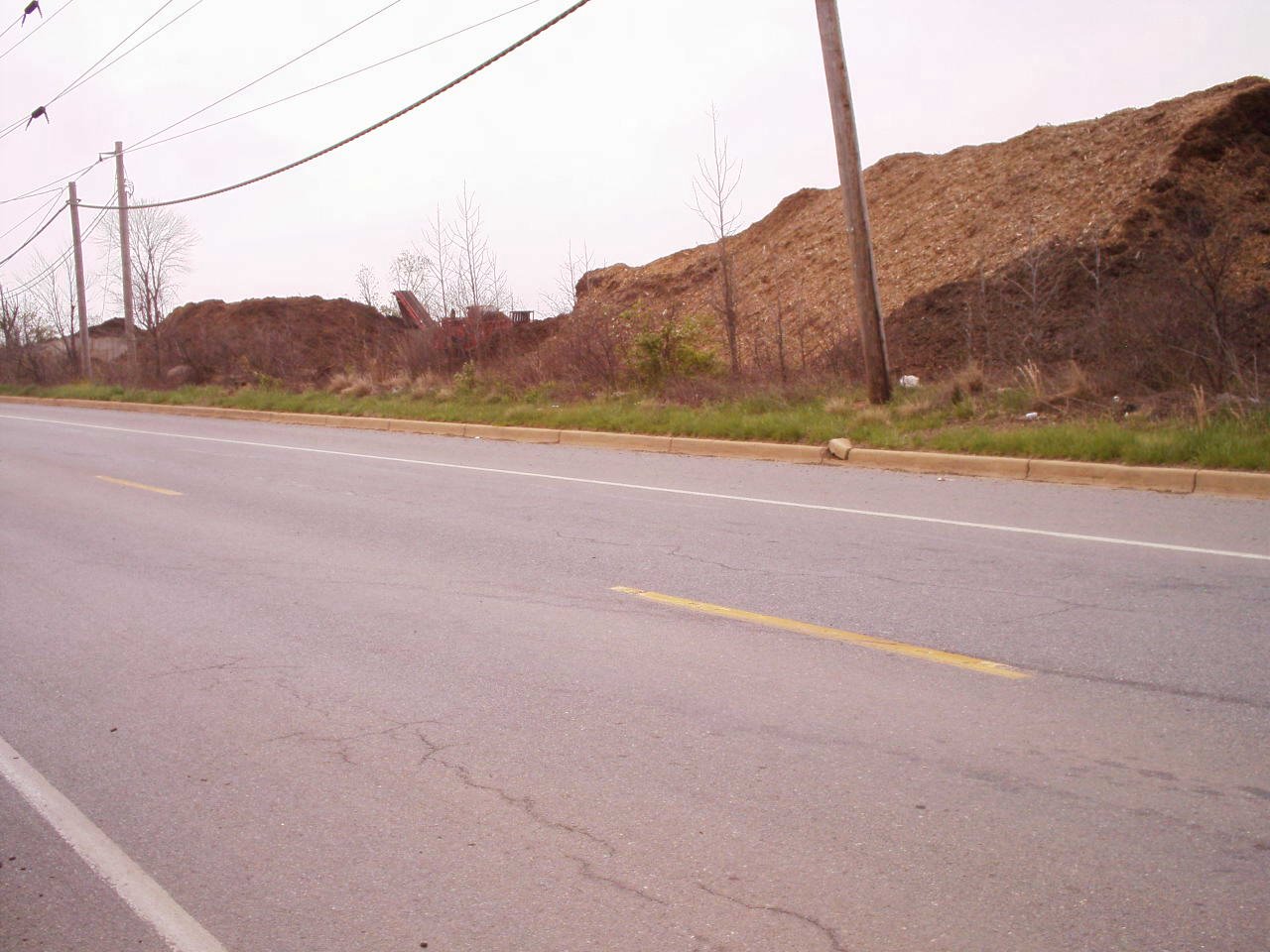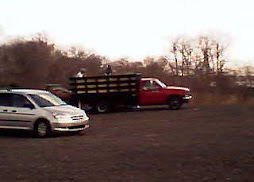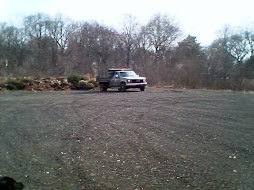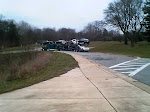-- HIASYS TOOLS --
Printer Friendly Version
Subscribe to the Wellesley Townsman
Beware of pesticides and their impact on health, environment
By Sarah Little / Guest Columnist
Wednesday, March 20, 2002
Spring is here, so here come the pesticides! But before you reach for yours, please think twice - pesticides are poisons. And before you consider using a pesticide, promise yourself you'll read the label and think a moment about what it says. Be aware that the ill-effects of pesticides on our health and environment are well documented.
Pesticides are hazards to human health
The American Association of Poison Control Centers reported that, each year, approximately 20,000 children are involved in common household pesticide poisonings. In the case of acute pesticide toxicity, according to Massachusetts Poison Control, "Harm to the body can occur within minutes of being poisoned by a chemical pesticide. Symptoms include: headache, nausea, diarrhea, stomachache, and flu-like symptoms. Poisoning can occur through ingestion, inhalation, or skin contact."
The effects of long-term or repeated lower level exposures to a toxic substance do not appear immediately and may take months to years to produce signs and symptoms. In 1983 it was found that pesticide applicators have 3 times the risk of developing lung cancer. In 1986 several lawn fungicides were classified as "probable" carcinogens by the Environmental Protection Agency. One of the products, mancozeb, reacts with sunlight to form a "known" carcinogen. In 1993, a study found that the common pesticide Dursban (chemical name chlorpyrifos) caused immune system disorders in people when their homes were treated with it. In 1995, researchers at the University of Southern California School of Medicine found that low levels of chlordane caused neurological disorders, attention deficit disorder symptoms, and "probably irreversible dysfunction of the brain." In 1996, a study found that working as a golf course superintendent significantly increases the risk of dying of four types of cancer: brain, non-Hodgkin's lymphoma, prostate and large intestine. In 1998, the American Public Health Association reported that just a small amount of toxin exposure during critical periods of development can have an irreversible effect lasting a lifetime. In a comparative study in Mexico, children exposed routinely to pesticides demonstrated decreases in stamina, coordination, memory, and the ability to draw familiar objects. In 2001 the United States General Accounting Office concluded that pesticides can have an adverse effect on human health and the environment, and federal agencies should be doing more to encourage pesticide use reduction.
Do you love your dog or cat?
Cancer is the number one killer of dogs and cats in this country. Many pesticides, their breakdown products, their inert ingredients, or their contaminants have been implicated in causing cancer. Your pets' habits, such as grooming and eating grass, increase their risk of exposure to pesticides, and they can't read warning signs to stay off the treated grass of your or your neighbor's property. A National Cancer Institute study found in 1991 that dogs whose owners used common broadleaf weed killers containing 2,4-D, had twice the rate of lymphoma (a cancer of the immune system) as dogs whose owners did not use it.
Tell the world you care
A 1995 survey of homeowners found that "A lawn is considered a source of beauty, pleasure, and economic value; an integral part of one's home, sending a clear message to others about the kind of people who live in the house." Beauty may be in the eye of the beholder, but a large expanse of perfectly green, uniform lawn without a single weed or blemish also sends the message that the homeowner does not realize the serious environmental and health effects of pesticides. Nor do they realize that they are unwittingly exposing themselves, their neighbors, and their community to risk from toxic chemicals. The point is, you can have an attractive lawn and beautiful yard, without using any chemical pesticides. People all over the country are doing just that by using organic lawn care and native plant landscaping. These techniques have the added benefit of reducing the fertilization and water needs of your yard. You can tell the world you have great taste, AND you care.
Avoiding secondary-pesticide exposure
The Wellesley Pesticide Awareness Campaign is trying to reach every Wellesley household with information and assistance for transitioning from common pesticide use to healthier and wiser pest management, but in reality it takes time to get the word out. Even if you, like many people in Wellesley, don't use pesticides, you can still be subjected to secondary-pesticide exposure. What can you do to avoid this? It is impossible to know the risk from a single exposure, but realize that for each exposure you avoid, you're making a deposit into your health bank for the future. If you transition to organic lawn care, you deposit a windfall, and your neighbors get some too!
Here are some tips for avoiding pesticides in your own Wellesley neighborhoods:
? Teach children to stay away from lawns and other areas where pesticide warning signs are posted. Pesticides persist for weeks to months. Keep children off treated lawn areas even after the pesticide warning signs are gone. Children's health is particularly sensitive to pesticide toxins.
? Avoid taking walks or exercising where you see landscapers applying chemicals, where you find a smelly, chemical odor, or on pesticide granules or powder residues on streets and sidewalks.
? Take off your shoes when you enter your house.
? Keep your pets off treated lawns. They track pesticides back into your own home.
? If your neighbors spray, ask them to notify you in advance so you can keep your children and pets inside, cover play equipment, sandboxes, garden vegetables and lawn furniture, and close windows to keep the spray or vapor cloud from drifting into your home.
? Educate your neighbors and friends about safe, ecological approaches to insect and weed control. Make sure they've seen our new "Healthy Lawns and Landscapes" brochure, available at Bread and Circus or the Town Hall.
Making the switch
If you are interested in transitioning to non-toxic lawn care, the Wellesley Pesticide Awareness Campaign would like to help. We realize it is not always easy to do, and it can take time. But your lawn can be green - AND healthy. Some of our local garden centers are very willing to help you get started on organic lawn care, for instance Needham Garden Center in Needham, and Russell's Garden Center in Wayland. The Natural Resources Commission can offer suggestions for books and resources, and maintains a list of ecologically minded landscapers. You can get on our e-mail list and receive updates on local ecological lawn and landscape workshops, the latest techniques and materials, and to find out about simple less-toxic pest control techniques. And if you want to know more, read up! There are a lot of great books out there in including "Tiny Game Hunting" by Klein and Wenner, or "Edaphos: Dynamics of a Natural Soil System" by Paul Sachs. Visit www.ci.wellesley.ma.us/nrc/pesticide, call the Natural Resources Commission at 781-431-1019 x294, or e-mail us at nrc@ci.wellesley.ma.us. Do it today! We look forward to your call.
Sarah Little is Wellesley's pesticide awareness coordinator, working under the Natural Resources Commission.
There is a picture attached to this site of a much smaller site in Wilmington, on the Governor Printz. Take a look at it, you'll have a small picture of what a lot less that 45,000 tons of compost and mulsh look like.
45,000 Tons is about 9/10's of what we are too take which would have gone to Cherry Island, all within 200ft of our Back Yards! Seems Unfair, but our Representative Politicans say NO IT ISN'T. YOU WILL LOVE IT, and you have no say!!
LET US NOT FORGET THAT THIS SITE IS TO BE FOR THE RECLYCING OF XMASS TREES NOW ACCOMPLISHED AWAY FROM ALL AT the Bellevue Park where currently bottles, oil, paper and more leave and compost is stored. So why the move from secluded site to a Great Visual View. Maybe DNREC wants us to know there doing something With Taxpayers and more importantly Voters Money?
Here is one Great Idea for DNREC:
Lets give each home-owner, apartment complex one trash compactor, they are better than a mulshing lawn mower as Sec. Hughes wants us to get, for they compact our trash before it gets to the Dump.
I have seen a weeks worth of family household garbage go into two 10 gallon paper bags. They are about $800.00 but well worth it, when you consider the amount of trash space they save!
But that would be addressing the entire problem of space at the Land Fill!!!! Oh! Dare We?
AddMe - Search Engine Optimization
Secretary Hughes Legacy on our Waterways, from DNREC Own Pamplet:
2007 Delaware Fish Consumption Advisories
Statewide Fresh Water, Estuarine & Marine Waters
Body ofWater Species Geographical Extent Contaminants of Concern
Advice*
One meal = 8-oz. serving for an adult and a 3-oz serving for children
All Waters NOT Specifically Listed Below All Species NOT Specifically Listed
Below
All Areas NOT specifically Listed Below All No more than one meal per week
Delaware Estuary and Tributaries Body of Water Species Geographical
Extent Contaminants of Concern Advice*
One meal = 8-oz.
serving for an adult and a 3-oz serving for children Delaware River All Finfish
Delaware State Line to the Chesapeake & Delaware Canal PCBs, Dioxin, Mercury,
Chlorinated Pesticides No consumption Weakfish-all sizes; Bluefish-14 inches or
less C & D Canal to the Mouth of the Delaware Bay PCBs No more than one
meal per month Lower Delaware River and Delaware Bay Striped Bass White Perch
American Eel Channel Catfish White Catfish Bluefish-greater than 14 inches C & D Canal to the Mouth of the Delaware Bay PCBs, Mercury No consumption for
women of childbearing age and children. All others, no more than onemeal per year
Shellpot Creek All Finfish Philadelphia Pike to the Delaware River PCBs No consumption Army Creek and Pond All Finfish Entire Creek and Pond PCB, Dioxin/Furans,
Dieldrin, Toxaphene No more than two meals per year Red Lion Creek All Finfish Route 13 to the Delaware River PCBs, Dioxin No more than one meal per year 2
Delaware Estuary and Tributaries (continued)
Body of Water Species Geographical Extent Contaminants of Concern Advice*
One meal = 8-oz.serving for an adult and a 3-oz serving for children
Chesapeake & Delaware Canal All Finfish Entire Canal in Delaware PCBs, DDT, Dieldrin,
Chlordane No consumption Appoquinimink River All Finfish Tidal Portions PCBs, Dioxin No more than onemeal per year Drawyers Creek All Finfish Tidal Portions PCBs, DDT No more than one meal per year Silver Lake Middletown All Finfish Entire Lake PCBs, Dieldrin, DDT, Dioxin No more than one meal per year St. Jones River All Finfish River Mouth to Silver Lake Dam PCBs, Dioxin, Mercury No more than two
meals per year Moores Lake All Finfish Entire Pond PCBs, DDT No more than two
meals per year Silver Lake Dover All Finfish Entire Pond PCBs, Dioxin, Mercury No more than two meals per year Wyoming Mill Pond All Finfish Entire Pond PCBs, Dioxin, DDT No more than two meals per year Prime Hook Creek All Finfish Entire Creek Mercury
Women of childbearing age and children should not eat more than one meal per month. All
others, no more than two meals per month.
3. Delaware Estuary and Tributaries (continued)
Body of Water Species Geographical Extent Contaminants of Concern
Advice*
One meal = 8-oz. serving for an adult and a 3-oz serving for children Waples Pond All Finfish Entire Pond Mercury Women of childbearing age andchildren should not
eat more than one meal per month. All others, no more than two meals per month
Slaughter Creek All Finfish Entire Creek PCBs, Dioxin/Furans No more than six
meals per year Christina Basin Body of Water Species Geographical
Extent
Contaminants of Concern
Advice*
One meal = 8-oz. serving for an adult and a 3-oz serving for children Tidal randywine
River All Finfish River Mouth to Baynard Boulevard PCBs No consumption Non-tidal
Brandywine River All Finfish Baynard Boulevard to PA Line PCBs, Dioxin No more than two meals per year Tidal Christina River All Finfish River Mouth to Smalley’s
Dam PCBs, Dieldrin No consumption Non-tidal Christina River All Finfish Smalley’s Dam to DE/MD Line. PCBs, Dieldrin, Chlordane No more than six meals per year
Tidal White Clay Creek All Finfish River Mouth to Route 4 PCBs No consumption
4
Christina Basin (continued)
Body of
Water Species Geographical Extent Contaminants of Concern
Advice*
One meal = 8-oz. serving for an adult and a 3-oz serving for children
Non-tidal White Clay Creek All Finfish Route 4 to DE/PA Line PCBs No more than one
meal per month Red Clay Creek All Finfish State Line to Stanton PCBs, Dioxin, Chlorinated Pesticides
No more than two meals per yearLittle Mill Creek All Finfish Creek Mouth to Kirkwood Highway PCBs No consumption Becks Pond All Finfish Entire Pond PCBs, Mercury No more than one meal per year Stocked Trout Body of Water Species Geographical
Extent Contaminants of Concern
Advice*
One meal = 8-oz. serving for an adult and a 3-oz serving for children Christina Creek Stocked Trout Rittenhouse Park to DE/MD Line PCBs, Dieldrin No more than six
meals per year Designated Trout Streams and Ponds other than Christina Creek
Stocked Trout Designated Trout Stocking Areas are listed in the
Delaware 2007 Fishing Guide and at
http://www.dnrec.state.de.
us/fw/trout/troutmaps.htm
PCBs No more than one per month 5
Delaware Atlantic Coastal Waters including Delaware Inland Bays
Body of Water Species Geographical Extent Contaminants of Concern
Advice*
One meal = 8-oz. serving for an adult and a 3-oz serving
for children Bluefish-14 inches or less
Coastal Delaware from Mouth of the Delaware Bay Southward to MD/DE Line
PCBs No more than one meal per month Delaware Atlantic Coastal Waters
including Delaware Inland Bays Bluefish-greater than 14 inches
Coastal Delaware from Mouth of the Delaware Bay Southward to
MD/DE Line PCBs, Mercury No consumption for
women of childbearing age and children. All others, no more than one meal per year
Notes:
1. The pollutant listed first is of the greatest concern in this system.
2. Proper trimming and cooking of fish can reduce but not eliminate the risk associated with PCBs, dioxins, and chlorinated pesticides. Trimming and cooking does not reduce the risk associated with mercury. * Do not add meal restrictions together. The advice for different species and different water bodies should not be combined.
Cancer Rates http://www.cdc.gov/nccdphp/publications/factsheets/ChronicDisease/delaware.htm
Saturday, January 19, 2008
9/10's or 45,000 - 50,000 tons of Yard Waste and Compost? Coming to Bellevue Aquatice Center!!
Posted by
photobill
at
6:39 AM
![]()











